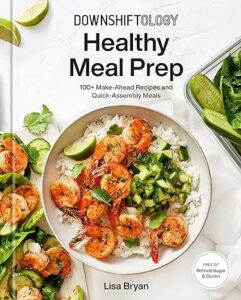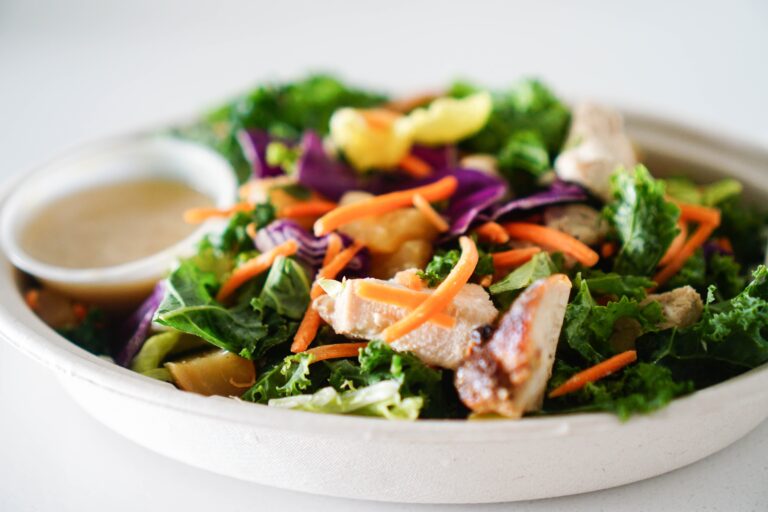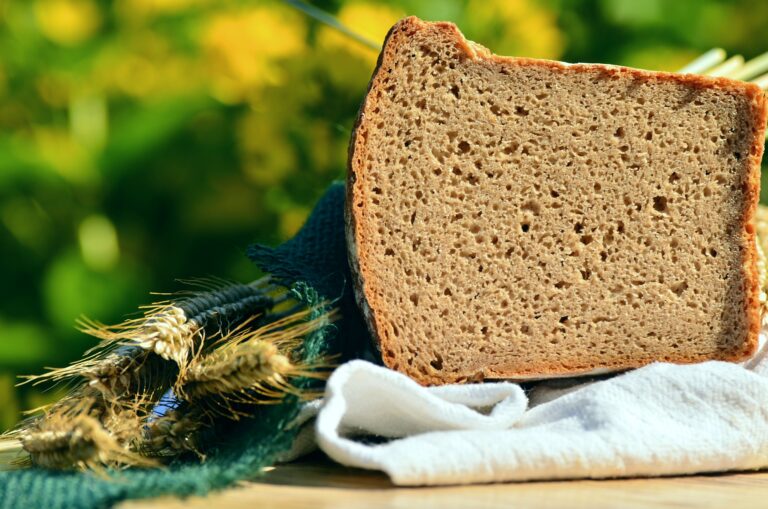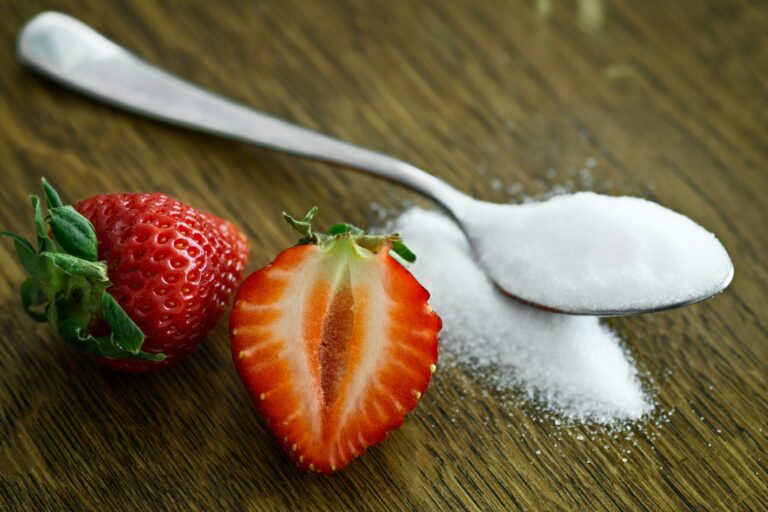Protein Defined
Protein – Defined, Requirements, and Food Sources
Much has been said about protein in our diets – that we need it (as of course we do), that athletes should load up on it, that not all proteins are created equal, that we eat too much protein and should therefore cut down our consumption of meat and dairy products and fall back on fruits and vegetables to maintain ourselves.
 Downshiftology Healthy Meal Prep |
How much protein do we need to be healthy?
Aptly enough, the word “protein” is derived from a Greek root meaning “of first importance,” and protein – which constitutes about one-fifth of an adult’s body weight – is the basic material of life. Muscles, organs, bones, cartilage, skin, antibodies, some hormones, and all enzymes (the compounds that direct chemical reactions in cells) are made of protein.
Proteins are constantly being broken down in our bodies. Most of the amino acids are reused, but we must continually replace some of those that are lost. This process is known as protein turnover. Our need to keep this process going begins at conception and last throughout life. Without dietary protein, growth and all bodily functions would not take place.
While plants and some bacteria can manufacture all the amino acids they need, the human body can manufacture only thirteen. The amino acids we can make are known, somewhat confusingly, as the “nonessential” amino acids. They are in fact essential, but not as part of our diet. The nine “essential” amino acids are those we have to eat. We can either get them from plant protein directly or by eating animals that consume plants and animals.
When we eat foods containing protein, the digestive system breaks it down to the constituent amino acids, which enter the body “pool” of amino acids. Each cell then assembles the proteins it needs using the building blocks available.

If, however, one or more of the needed amino acids is in short supply or not available at all, others that may be on hand cannot be utilized to form a protein. This is why it is important to eat a diet that contains all of the essential amino acids plus enough additional amino acids to allow for synthesis of the “nonessential” amino acids.
|
Getting complete protein Nutritionists use the phrases “complete protein” and “incomplete protein” to describe the proteins provided by various foods. If a food supplies a sufficient amount of the nine essential amino acids, it is called a complete protein. Virtually all proteins from animal foods are complete. Foods that lack or are short on one or more of the essential amino acids – such as some fruits, grains, and vegetables – are called incomplete proteins. Such plant-derived foods can nonetheless be excellent sources of protein if eaten in combinations that supply all of the essential amino acids. For example, the amino acids missing in a vegetable can be provided by eating a grain product, another vegetable, or an animal-derived protein at the same meal. Animal vs. vegetable
The fact that we are omnivorous, that is, we can eat both meats and plants, has contributed to the survival of the human species. But as anthropologists have pointed out, human beings have overwhelmingly preferred meat to other foods. And a number of experts attribute the general good health, increased height, and longevity of people of developed countries today to their high-protein diets.
|
|
|||||||||||||||||||||||||||||||||||||||||||||||||||||||||||||||||||||||||||||||||||||||||||||||||||||||||||||
Protein RequirementsThe body cannot store protein, so it needs a fresh supply every day. The Food and Nutrition Board of the National Academy of Sciences has established a daily Recommended Dietary Allowance (RDA) for protein based on a person’s age and weight. According toe the Academy, because most people in the United States eat meat and dairy products regularly, the average protein intake is higher than what most people need. So you should easily meet the following RDAs: The RDA for adults is 0.8 grams of protein for each kilogram (2.2 pounds) of body weight. This works out to 44 grams for a 120 pound person, 55 grams of protein for a weight of 150 pounds, and 66 grams for 180 pounds. These allowances assume that you eat a mixed diet of proteins – some high-quality (complete), some low-quality (incomplete). If, like most Americans, you consume mostly high-quality protein, your total requirement will there fore be slightly less. If you get almost all your protein from plant sources, it will be slightly greater. The variation due to the type of diet is no more than approximately 15 percent. Children under eighteen need some additional protein to allow for growth, and the younger they are, the more protein they need per pound of body weight. Pregnant women are allocated an additional 10 grams of protein per day by the RDA, lactating mothers an extra 12 to 15 grams during the first six months. | ||||||||||||||||||||||||||||||||||||||||||||||||||||||||||||||||||||||||||||||||||||||||||||||||||||||||||||||
 |
|
Food Additives Healthy Eating The Right Protein Beyond Hyped Diets Fruits and Vegetables Facts and Benefits of Fiber |


 Meat
and other animal products are the most readily available sources of complete
protein. The protein content, by weight, of cooked meat, fish, poultry,
and mild solids is between 15 and 40 percent. The protein content of cooked
cereals, beans, lentils and peas ranges from 3 to 10 percent. Potatoes,
fruits, and leafy green vegetables come in at 3 percent or lower. Soybeans
and nuts have a protein content comparable to meat, but, depending upon
how they are prepared, their proteins may not be as easily digested. However,
recent research suggests that in a mixed or even totally vegetarian diet,
the issue of digestibility is not too important. For someone eating a
whole grain and vegetable diet, no more than 15 percent of the protein
consumed would be unavailable because of problems with digestibility.
Meat
and other animal products are the most readily available sources of complete
protein. The protein content, by weight, of cooked meat, fish, poultry,
and mild solids is between 15 and 40 percent. The protein content of cooked
cereals, beans, lentils and peas ranges from 3 to 10 percent. Potatoes,
fruits, and leafy green vegetables come in at 3 percent or lower. Soybeans
and nuts have a protein content comparable to meat, but, depending upon
how they are prepared, their proteins may not be as easily digested. However,
recent research suggests that in a mixed or even totally vegetarian diet,
the issue of digestibility is not too important. For someone eating a
whole grain and vegetable diet, no more than 15 percent of the protein
consumed would be unavailable because of problems with digestibility.







I try to eat nuts as a snack through out the day. That way I do not need to eat as much meat for lunch or dinner. I works well for me.